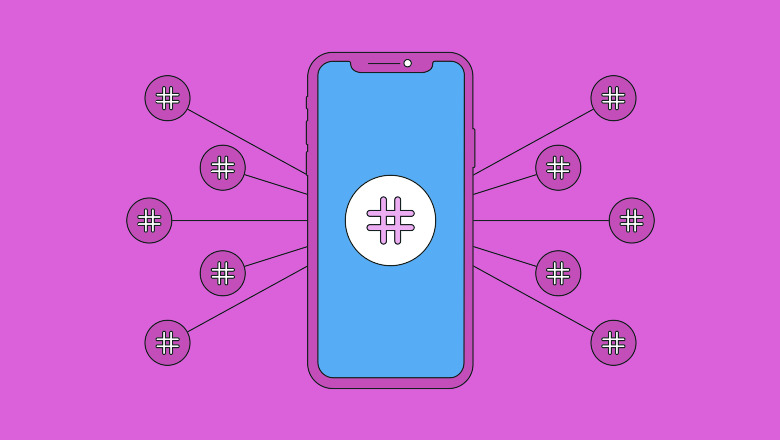In today’s digital-first world, hashtags have evolved from a mere pound symbol to a powerful tool that drives conversations, trends, and visibility online. But using hashtags effectively is more than just slapping a # onto random words. There’s a real science to it — and when used strategically, hashtags can supercharge your content’s reach and engagement.
Let’s dive into the science of hashtags and uncover how to make them work smarter, not harder.

What Is a Hashtag, Really?
A hashtag is a keyword or phrase preceded by the ‘#’ symbol, used on social media platforms to categorize content and make it discoverable. Think of it as a digital filing system — it helps users find content based on topics of interest.
But not all hashtags are created equal. Some are too broad, some too niche, and others are completely irrelevant. That’s why understanding their anatomy is crucial.
The Psychology Behind Hashtag Use
Why do people engage with hashtags? Here’s the psychological side:
- Social Belonging: Users want to be part of trending conversations and communities.
- Content Discovery: People follow or search hashtags to find content tailored to their interests.
- FOMO (Fear of Missing Out): Trending hashtags trigger curiosity and increase content interaction.
Knowing this helps you choose hashtags that not only describe your content but also invite users in.
Types of Hashtags (And When to Use Them)
Here are the main categories of hashtags and their strategic uses:
1. Trending Hashtags
Used during events or viral moments (#MetGala2025, #MondayMotivation). They boost visibility temporarily but require timely use.
2. Niche Hashtags
These are specific to your industry or audience (#VeganSkinCare, #TravelVloggerIndia). They may have lower volume but higher engagement from the right audience.
3. Branded Hashtags
Created by your business to build community or run campaigns (#GoDigital360Challenge, #MyMakeupStory). Great for user-generated content and brand identity.
4. Community Hashtags
Used to connect with like-minded users (#WritersOfInstagram, #GirlBossIndia). They help build loyal followers and brand affinity.
5. Descriptive Hashtags
Simply describe the content in your post (#BeachSunset, #HomeOfficeGoals). Use them to improve discoverability in search.
How Many Hashtags Should You Use?
Platform-wise best practices:
- Instagram: 5–10 relevant hashtags. Too many may look spammy.
- Twitter/X: 1–2 hashtags max. Keep it clean.
- LinkedIn: 3–5 hashtags. Stay professional.
- YouTube: Up to 15. Prioritize the first 3 — they appear above the title.
- TikTok: 3–5 smart hashtags including one trending one and one niche tag.
👉 Pro Tip: Don’t use all 30 hashtags just because Instagram allows it. Relevance beats quantity.
Hashtag Research: The Smart Way
Using the right hashtags starts with research. Here’s how:
- Use platform search to see what’s trending in your niche.
- Spy on competitors and top creators.
- Use tools like Hashtagify, RiteTag, or Later to analyze performance.
- Create a saved set of evergreen + niche + branded hashtags for easy reuse.
Do’s and Don’ts of Hashtag Use
✅ DO:
- Mix high-volume and niche tags.
- Keep hashtags relevant to the content.
- Use branded hashtags to track campaigns.
- Test and analyze performance regularly.
❌ DON’T:
- Use banned or broken hashtags.
- Copy-paste the same set every time without tweaking.
- Use irrelevant trending hashtags just for reach.
- Clutter your caption — consider placing hashtags in the first comment (Instagram).
Bonus: Hashtag SEO – The Overlooked Goldmine
Yes, hashtags impact social SEO. On platforms like Instagram and LinkedIn, hashtags are searchable keywords. That means the right hashtag strategy helps your content rank in search results — not just appear in feeds.
So if you want to be discoverable, think: What would my audience type in the search bar? Then turn those into relevant hashtags.
Final Thoughts
Hashtags aren’t just trendy tools — they’re intentional strategies that, when mastered, can skyrocket your visibility and engagement. The key is to be purposeful, relevant, and consistent.
Treat hashtags as part of your content strategy — not an afterthought — and watch how they amplify your social presence.
Want help crafting your perfect hashtag strategy?
Let’s make your brand discoverable — one hashtag at a time.
Visit GoDigital360Degree for more blogs!


Leave a Reply